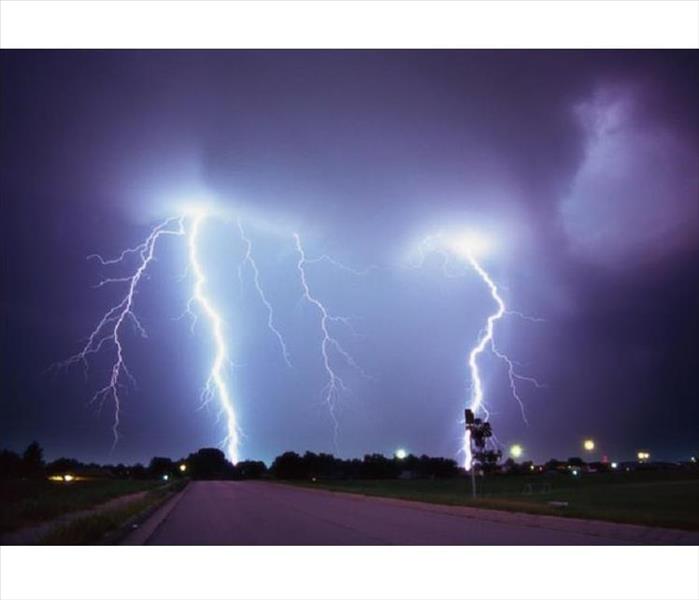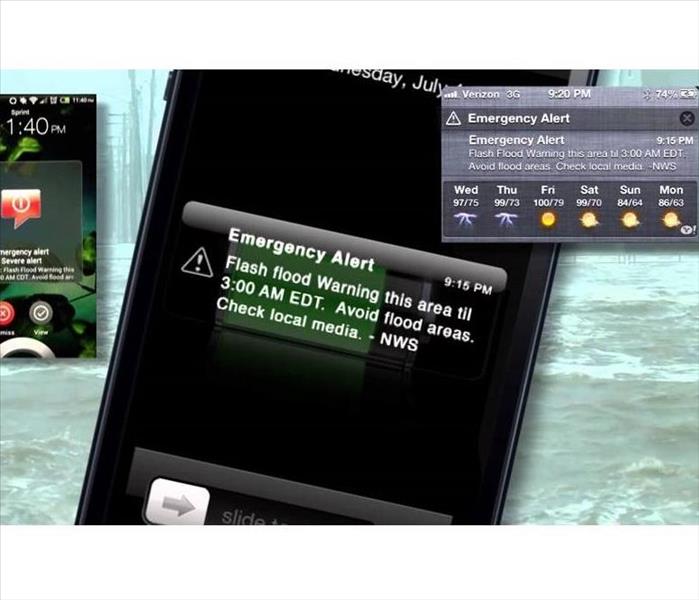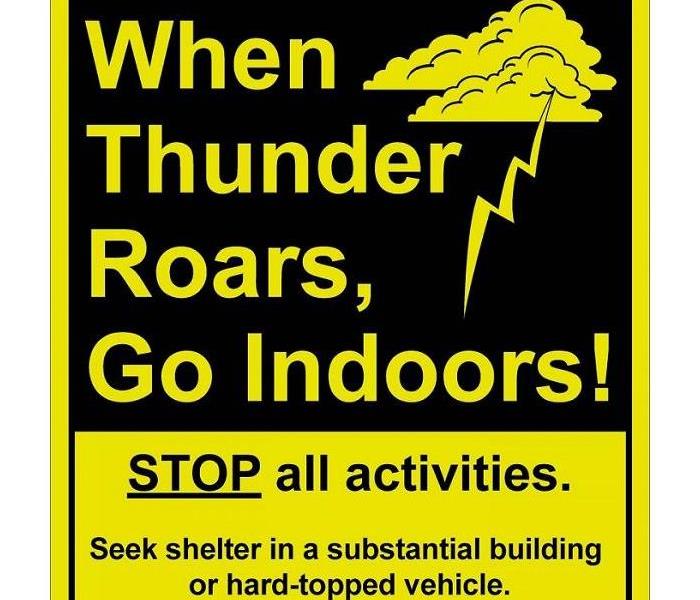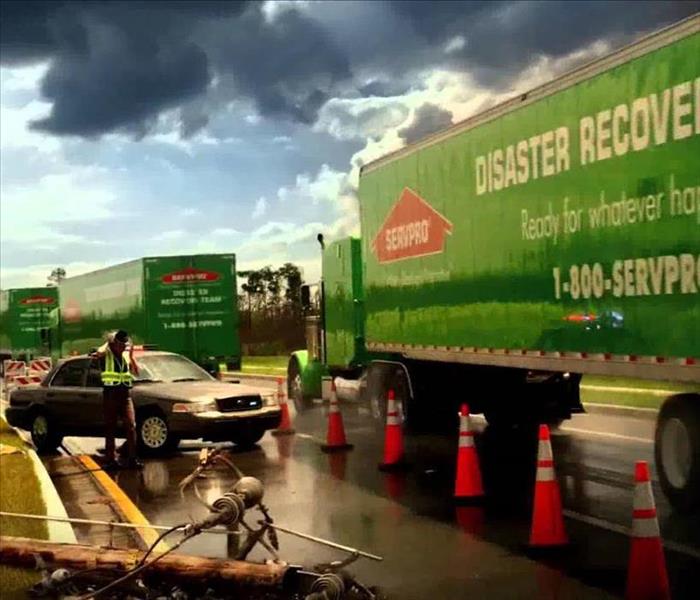Recent Storm Damage Posts
Common Storms in Maine: What You Need to Know
9/18/2024 (Permalink)
Living in Lewiston, ME, means dealing with a variety of storms throughout the year. Understanding the different types of storms we face and how to prepare for them can help keep you and your property safe. Here’s a closer look at the common storms in Maine and some practical tips to handle them effectively.
Winter Storms
Winter storms are a regular part of life in Maine, bringing heavy snowfall, ice, and freezing temperatures. These storms can cause significant disruptions, including power outages, dangerous driving conditions, and property damage.
Impacts of Winter Storms
Heavy snow can put a lot of pressure on roofs, potentially leading to collapses, especially on older buildings or those with flat roofs. Ice storms can bring down trees and power lines, causing widespread power outages. According to the National Oceanic and Atmospheric Administration (NOAA), winter storms have caused an average of $2.9 billion in damages annually in the U.S. from 2001 to 2020.
How to Prepare
To get ready for winter storms, make sure your home is well-insulated and you have a reliable heating source. Stock up on essentials like food, water, and medications. Keep an emergency kit in your car that includes blankets, a shovel, and ice melt.
Nor’easters
What Are Nor’easters?
Nor’easters are powerful storms that can bring heavy rain, snow, and strong winds. These storms typically occur between September and April and can last for several days, causing extensive damage.
Impacts of Nor’easters
These storms can cause severe coastal erosion, flooding, and wind damage. The combination of heavy precipitation and strong winds often leads to power outages and hazardous travel conditions.
How to Prepare
Secure outdoor items that could become projectiles in high winds. If you live in a flood-prone area, have sandbags ready and know your evacuation routes. Keep your emergency kit stocked and stay updated by following local weather reports.
Thunderstorms
Thunderstorms are common during the warmer months in Maine. They bring heavy rain, lightning, and sometimes hail. These storms can develop quickly and be very localized.
Impacts of Thunderstorms
Lightning strikes can cause fires and power outages. Heavy rain can lead to flash flooding, particularly in low-lying areas. Hail can damage crops, vehicles, and roofs.
How to Prepare
During a thunderstorm, stay indoors and avoid using electrical appliances. Unplug sensitive electronics to protect them from power surges. Ensure that gutters and drains are clear to prevent water accumulation.
Hurricanes
While not as common as other storms, hurricanes can still affect Maine, particularly during late summer and early fall. Hurricanes bring high winds, heavy rain, and storm surges.
Impacts of Hurricanes
Hurricanes can cause extensive flooding, wind damage, and power outages. The storm surge can lead to severe coastal flooding and erosion. According to FEMA, just one inch of floodwater can cause up to $25,000 in damage to your home.
How to Prepare
If a hurricane is forecasted, secure your home by boarding up windows and bringing in outdoor furniture. Have an evacuation plan and know where your nearest shelter is located. Keep your emergency kit ready and include important documents in a waterproof container.
Ready Yourself for Any Storm
Understanding the common storms in Lewiston, ME, and how to prepare for them can make a significant difference in your safety and the protection of your property. Winter storms, nor’easters, thunderstorms, and hurricanes each bring their own challenges, but with the right preparation, you can minimize their impact. If your home suffers storm damage, contact SERVPRO of Lewiston-Auburn. Our team is ready to assist with professional restoration services to help you recover quickly and efficiently. Stay safe and stay prepared!
Understanding Storm Surge and Its Impact on Coastal Communities
5/15/2024 (Permalink)
As a trusted provider of restoration and cleaning services, SERVPRO® is committed to not only restoring homes and businesses after disasters but also to educating our communities about potential risks. One such risk that coastal communities often face during severe weather events is storm surge. In this blog post, we'll delve into what storm surge is, how it impacts coastal areas, and what steps residents can take to stay safe.
What is Storm Surge?
Storm surge is an abnormal rise in sea level caused by a combination of factors such as strong winds and low atmospheric pressure during a tropical cyclone or intense storm. It's important to note that storm surge is not the same as tsunami, which is triggered by seismic activity. Instead, storm surge is a phenomenon associated with weather events like hurricanes, tropical storms, or nor'easters.
Impact on Coastal Communities
Coastal communities are particularly vulnerable to the destructive force of storm surge. The surge of water can inundate coastal areas, causing widespread flooding, erosion, and damage to infrastructure and property. The intensity of the surge depends on various factors including the strength and size of the storm, the shape of the coastline, and the slope of the ocean floor.
During a storm surge, low-lying areas are at the greatest risk of flooding, including homes, businesses, and critical infrastructure such as roads and power lines. In extreme cases, storm surge can lead to devastating loss of life and property, making it essential for residents to understand the risks and take proactive measures to mitigate them.
Staying Safe During Storm Surge
To stay safe during a storm surge, it's crucial for coastal residents to stay informed and heed evacuation orders issued by local authorities. Here are some additional tips to help minimize the impact of storm surge:
- Have an emergency plan in place that includes evacuation routes and designated meeting points.
- Secure loose outdoor items and reinforce windows and doors to protect against wind and water intrusion.
- Consider investing in flood insurance to help cover the cost of damage caused by storm surge.
- Stay tuned to weather updates from reliable sources and follow any instructions or warnings issued by emergency management agencies.
By understanding the risks associated with storm surge and taking proactive steps to prepare, coastal communities can better protect themselves and their property from the devastating effects of these powerful weather events.
At SERVPRO, we stand ready to assist coastal communities in the aftermath of storms and other disasters. Our trained professionals are equipped to handle the cleanup and restoration process, helping homeowners and businesses get back on their feet quickly and safely.
For more information about storm surge preparedness or our range of restoration services, contact your local SERVPRO franchise today. Stay safe, stay informed, and remember that preparation is key when it comes to protecting your home and loved ones from the impacts of severe weather.
Be Storm Smart, Be Storm Ready!
7/6/2017 (Permalink)
Severe weather can happen anytime, anywhere. Each year, Americans cope with an average of the following intense storms:
- 10,000 severe thunderstorms
- 5,000 floods or flash floods
- 1,000 tornadoes
- 2 land falling deadly hurricanes
Approximately 98 percent of all presidentially declared disasters are weather-related, leading to around 500 deaths per year and nearly $15 billion in damage. Knowing your risk of severe weather, taking action and being an example are just a few steps you can take to be better prepared to save your life and assist in saving the lives of others.
Know Your Risk. The first step to becoming weather-ready is to understand the type of hazardous weather that can affect where you live and work, and how the weather could impact you, your business and family. Check the weather forecast regularly, obtain a NOAA Weather Radio, and learn about Wireless Emergency Alerts. Severe weather comes in many forms and your shelter plan should include all types of local hazards.
Take Action. Take the next step in severe weather preparedness by creating a communications plan for your home and business. Put together or purchase an emergency kit. Keep important papers and valuables in a safe place.
Be an Example. Once you have taken action to prepare for severe weather, share your story with co-workers and family and friends on Facebook or Twitter. Your preparedness story will inspire others to do the same.
Build an Emergency Kit
- Water (one galloon per person per day)
- Food (non-perishable 3-day supply)
- Manual can opener
- Battery operated radio, preferably a NOAA Weather Radio
- Flashlight and extra batteries
- First aid kit
- Whistle to signal for help
- Clothing
- Dust makes or bandanas
- Plastic sheeting, garbage bags and duct tape
- Wrench or pliers to turn off utilities
- Hygiene items
- Important documents; copies of insurance policies, identification and bank account information
- Cash
- Fire extinguisher
- Matches in a waterproof container
Contact SERVPRO of Lewiston Auburn for more readiness tips and tools, including SERVPRO’s Emergency READY Profile (ERP) at no cost. Having an ERP in place for your facility can help minimize business interruption in the event of a disaster.
WEATHER ALERTS: Tools to keep you safe
7/6/2017 (Permalink)
One of the best precautions you can take is to purchase a good quality weather radio. A weather radio is designed to alert you to potentially dangerous weather situations, like an approaching tornado. It allows you to be warned ahead of storms, providing you time to seek shelter. A weather radio is the most reliable source for weather alerts.
Weather radios have made many advancements over the years and are very affordable. Most basic weather radios average around $30 and can be programmed to only alert you for the weather alerts you chose.
When shopping for a weather radio, look for the following key features.
- Reviewable alerts (you can scroll through alerts and turn off the siren for alerts you do not wish to hear).
- Specific Area Message Encoding (SAME) alert programming (alerts when specific counties are threatened, ensuring you only receive alerts for your county).
- Ease of programming
If you need help programming your weather radio, you can always contact your local National Weather Service Office or additional information, including county codes for you state, visit the NOAA Weather Radio website at www.nws.noaa.gov/nwr.
Understanding WEAS
Wireless Emergency Alerts (WEA) are emergency messages sent by authorized government alerting authorities through your mobile carrier. Government partners include local and state public safety agencies, FEMA, the FCC, the Department of Homeland Security, and the National Weather Service. Alerts received at the right time can help keep you safe during an emergency. With WEA, alerts can be sent to your mobile device when you may be in harm’s way, without need to download an app or subscribe to a service. WEA may share:
- Extreme weather warnings
- Local emergencies requiring evacuation or immediate action.
- AMBER Alerts
- Presidential Alerts during a national emergency
A WEA will look like a text message. The WEA message will typically show the type and time of alert, any action you should take, and the agency issuing the alert. The message will be no more than 90 characters.
Visit www.ctia.org/wea to learn more about Wireless Emergency Alerts, including how to determine if your mobile device is WEA-capable.
Lightning Safety Tips
7/6/2017 (Permalink)
Lightning is one of the leading causes of weather-related fatalities. Though the odds of being struck by lightning in a given year are only around 1 in 500,000, some factors can put you in a greater risk for being struck. Here are a few lightning safety tips.
Be aware. Check the forecast before participating in outdoor activities. IF it calls for thunderstorms, postpone your trip or activity, or make sure adequate safe shelter is available.
Go indoors. Remember the phrase, “When thunder roars, go indoors.” Find a safe, enclosed shelter when you hear thunder. Safe shelters include homes, offices, shopping centers, and hard-top vehicles with the windows all rolled up.
Avoid windows, doors, porches, and concrete. Do not lie on concrete floors and avoid leaning on concrete walls. Lightning can travel through any metal wires or bars in concrete walls or flooring.
Avoid water. Do not bathe, shower, wash dishes, or have any other contact with water during a thunderstorm because lightning can travel through a building’s plumbing.
Avoid electronic equipment. Do not use computers, laptops, game systems, washers, dryers, stoves, or anything connected to an electrical outlet. Lightning can travel through electrical systems, radio and television reception systems, and any metal wires or bars in concrete walls or flooring. Equip homes and offices with whole-house surge protectors to protect appliances.
When Disaster Strikes
7/5/2017 (Permalink)
When a storm or disaster strikes, SERVPRO’s Disaster Recovery Team is poised and “ready for whatever happens.” With a network of more than 1,700 Franchises, the SERVPRO System strives to be faster to any size disaster. Strategically located throughout the United States, SERVPRO’s Disaster Recovery Team is trained and equipped to handle the largest storms and highest flood waters. Providing experience, manpower, equipment, and other resources, the Disaster Recovery Team assists SERVPRO of Lewiston Auburn. SERVPRO’s Disaster Recovery Team has responded to hundreds of disaster events. In the aftermath of a disaster, there is only one objective: to help you make it “Like it never even happened."
2016 East Tennessee Wildfires:
One of the largest in the history of Tennessee, the Great Smoky Mountains wildfires burned more tan 17,000 acres and about 2,500 structures in November 2016. The 12 crews were dispatched worked a total of 78 jobs.
2016 Hurricane Matthew:
Following the East Coast from Florida up to North Carolina, this hurricane caused major flooding, primarily as rivers rose in Eastern North Carolina. SERVPRO had 169 crews dispatched and took on more than 1,050 jobs.
2016 Louisiana Flooding:
Catastrophic flooding occurred in Southern Louisiana where rainfall measured 20 inches or more total, falling at a rate of more than 2-3 inches per hour in some places. This caused rivers and inland waterways to rise record levels. The Disaster Recovery Team responded to over 830 jobs with 185 crews.
2016 Houston, TX Flooding:
In April, a nearly stationary mesoscale convective system developed over Houston, resulting in widespread rainfall rates of 2-4 inches per hour. This was a historic flooding event for Harris County, which saw a total of nearly 18 inches of accumulated rainfall. The Storm Team dispatched 81 crews to over 360 jobs.
2015 Siberian Express:
Record sub-zero temperatures caused major problems for a large portion of the country stretching from Florida to Maine. The Midwest also experienced record-breaking low temperatures, resulting in frozen pipes and ice dams causing major problems for residents. The Storm Team dispatched a total of 257 crews from 108 Franchises to assist local SERVPRO Franchises completing nearly 2,000 jobs.
2014 Mid-Atlantic Flooding:
Rainfall rates up to 2 inches per hour caused major flash flooding stretching from Northeast Ohio all the way to Portland, Maine. Eastern Michigan and Baltimore, Maryland, were also impacted, creating over 1,381 jobs for the Storm Team to produce. A total of 82 SERVPRO Franchises and 173 crews mitigated.
2014 Polar Vortex:
Record low temperatures caused by a break in the North Pole’s polar vortex resulted in unprecedented freezing event, spanning from east of the Rocky Mountains to as far south as central Florida, affecting all or part of 39 states and 70% of the SERVPRO Franchise Systems.
2013 Colorado Floods:
Heavy rainfall, with amounts up to 17 inches in some areas, resulted in widespread flooding in Fort Collins, Boulder, and surrounding Colorado mountain communities. The Disaster Recovery Team responded with 109 crews from 48 Franchises to assist the Local SERVPRO Franchises in emergency response.
2012 Hurricane Sandy:
Affecting more than 20 states, Sandy left widespread damage and flooding from Florida stretching the entire eastern seaboard to Maine. The Disaster Recovery Team placed nearly 1,000 crews in affected areas, representing over 300 SERVPRO Franchises from across the country. Teams traveled from as far as Arizona, California, Oregon, and Washington.
When Storms or Floods hit in your area, SERVPRO of Lewiston Auburn is ready!
2/2/2017 (Permalink)
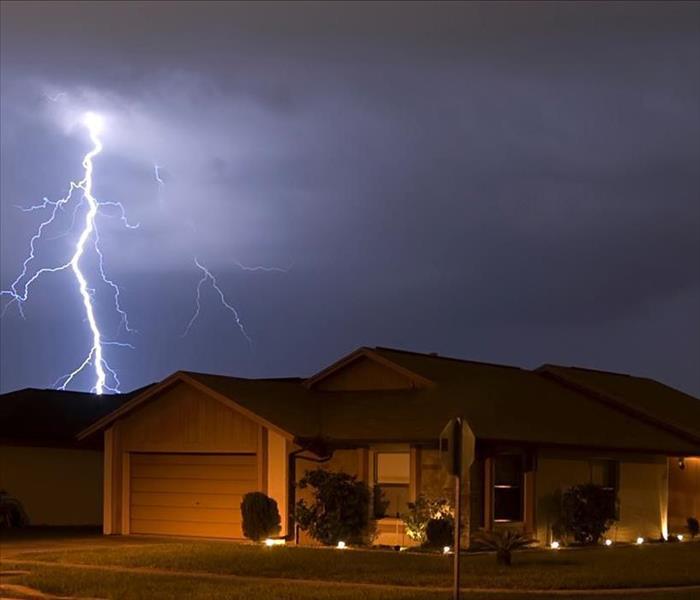 Our highly trained crews are ready to respond 24/7 to storm or flood damage in the Lewiston Auburn Area.
Our highly trained crews are ready to respond 24/7 to storm or flood damage in the Lewiston Auburn Area.
SERVPRO of Lewiston Auburn specializes in storm and flood damage restoration. Our crews are highly trained and we use specialized equipment to restore your property to its pre-storm condition.
Faster Response
Since we are locally owned and operated, we are able to respond quicker with the right resources, which is extremely important. A fast response lessens the damage, limits further damage, and reduces the restoration cost.
Resources to Handle Floods and Storms
When storms hit in the Lewiston Auburn Area, we can scale our resources to handle a large storm or flooding disaster. We can access equipment and personnel from a network of 1,650 Franchises across the country and elite Disaster Recovery Teams that are strategically located throughout the United States.
Have Storm or Flood Damage? Call Us Today 207-783-2500

 24/7 Emergency Service
24/7 Emergency Service
